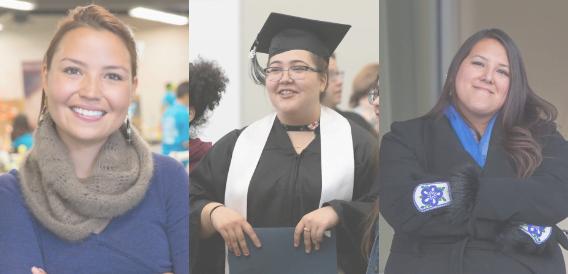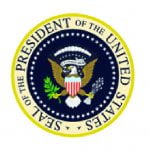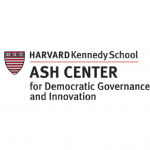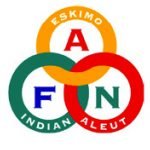From rocket launches to spacewalks, women are reaching new heights in STEM careers and education. March is Women’s History Month and ANSEP proudly supports the women in STEM who are breaking down barriers and achieving success.
Although U.S. astronaut Kathryn Sullivan became the first woman to walk in space in 1984, Christina Koch will be part of the first expedition team supported by an all-female Mission Control team this week. Lead flight director Mary Lawrence, lead spacewalk officer Jackie Kagey and Canadian Space Agency flight controller Kristen Facciol will assist throughout the seven-hour event.
Koch, who earned bachelor’s and master’s degrees in electrical engineering, led expeditions to the South Pole and the Arctic before becoming an astronaut. She graduated from the 2013 NASA astronaut class, which selected only eight astronaut candidates from more than 6,100 applicants. The 2013 NASA astronaut class was the first and only class comprised of 50 percent women, but recent astronaut classes have seen increased percentages of female candidates.
Women in STEM
According to the National Girls Collaborative Project, women represent half of the U.S. college-educated workforce but only 29 percent of the STEM workforce. Perhaps even more staggering, only 15 percent of all engineers are women.
Despite the overwhelming odds against women in STEM fields, NASA is one organization that has paved the way for women to make their mark on the universe. Currently, women comprise one third of the NASA workforce, and 59 women have flown in space for the U.S., Russia and China combined.
Women of NASA
A few milestones for female space exploration include:
- 1963: First woman in space.
- 1983: First American woman in space.
- 1984: First woman to participate in an extra-vehicular activity.
- 1992: First African American woman in space.
- 1995: First female Space Shuttle pilot.
- 1999: First female Space Shuttle commander.
- 2001: First female Space Station expedition crew member.
- 2008: First female International Space Station commander.
ANSEP and NASA join forces to inspire students
ANSEP has a longstanding relationship with NASA and a shared mission to provide students from all backgrounds with access to STEM education. In 2016, NASA Aerospace Engineer Dr. Anita Sengupta visited with students at ANSEP’s annual Celebration. She told them how her efforts were responsible for safely landing the Mars rover Curiosity on the surface of the red planet. She encouraged ANSEP students to find their passion, dream big and never give up. Today, Sengupta continues inspiring students across the world by leading the industry with groundbreaking innovation in the eco-friendly transportation sector.
Female ANSEP students compete in NASA rocket launch
NASA is not the only organization empowering women and minority students to overcome statistics and chase their dreams. ANSEP is doing its part to give students the tools and motivation they need to become the next generation of female astronauts and engineers. Six ANSEP University Success students are competing in NASA’s Minnesota Space Grant Consortium rocket launch this May.
Although the official rocket competition is only two days long, the women have been hard at work for nearly a year to prepare for the competition. The research-based activity challenges students from across the country to design, build and test rocket propulsion systems.
The University of Alaska Anchorage students, who are members of the Alaska Northstars Rocket Club, will travel to Minnesota to compete against 19 other teams from top-notch schools such as Georgia Tech and Massachusetts Institute of Technology.
Space science
The ANSEP team’s goal is to create a rocket that will hit Mach 1 speed, or 343 meters per second, which is the speed of sound. The women participating on the ANSEP team are Temyka Ayuluk, Rachelle Griffitts, Monica Helm, Danica Mike, Trisha Jimmie and Helen Segura. Each of them may have a different reason for choosing to pursue a STEM career, but they have the ANSEP community in common.
Originally from Chefornak, Alaska, Temyka Ayuluk first became involved with ANSEP as an Acceleration Academy (Summer) student. After spending five weeks immersed in STEM education, she returned for ANSEP Summer Bridge. As part of this component, which is offered to students the summer between high school and college, she worked a paid internship for the U.S. Geological Survey. She then enrolled full-time at the University of Alaska Anchorage in the fall. Temyka hopes to use her engineering degree to give back to the Chefornak community.
Civil engineering student Rachelle Griffitts is actively involved with ANSEP and the Bristol Bay Native Corporation, which named her “Student of the Year” in 2017. A first-generation college student and mother to a 10-year-old girl, she plans to return to her hometown of Ewok to pursue a career in renewable energy development.
As University Success students, all six women participate in weekly recitations with fellow engineering students, mentors and professors. As part of the ANSEP community, they’re developing relationships that will foster success in college and beyond. They also hope to inspire young girls from their hometowns and across Alaska to follow in their footsteps.
Female heroes
ANSEP alum and University of Alaska Anchorage graduate Jessica Hunt is already using her degree to help students in her hometown of Emmonak. Growing up in the rural community of only 800 residents, Jessica understands first-hand the unique academic challenges students in her village face. As a high school math teacher, she instills a passion for education in her students and connects them to programs like ANSEP that foster academic success.
Dr. Michele Yatchmeneff also understands the challenges many minority students and students from rural Alaska experience. As a doctoral student at Purdue University, Michele was often treated like a minority quota instead of a deserving candidate. After earning her degree, she decided to return to Alaska where she serves as an ANSEP mentor and is the first female Alaska Native engineering professor at the University of Alaska Anchorage. It is her mission to empower students of all backgrounds to embrace their heritage and achieve their career goals. The National Science Foundation has even recognized Michele’s innovative approach to understanding societal factors’ relation to a sense of belonging and awarded her the prestigious Faculty Early Career Development Grant.
Yosty Storms, who grew up living a traditional subsistence lifestyle in Unalakleet, thought that she was bad at math. Then she discovered ANSEP. As a Middle School Academy student, she realized she actually excelled at math and had just never received proper instruction. Yosty progressed all the way through the ANSEP pipeline and now works full-time as an ANSEP regional director. She uses her experiences and expertise to help students from across Alaska realize their full potential.
Yosty provides support and guidance to ANSEP students like Summer Morse, who is also following her dreams and is on track to become a biologist. Now a University Success student, Summer first became involved with ANSEP when she joined the full-time Acceleration Academy (Mat-Su). As a high school student, she was able to earn free college credits and jumpstart her STEM career. With the support of ANSEP, Summer enrolled at the University of Alaska Anchorage feeling confident and academically prepared for college.
From the Last Frontier to the Final Frontier, ANSEP is incredibly proud to support women who are making strides in STEM education. To learn more or get involved, visit www.ANSEP.net.




